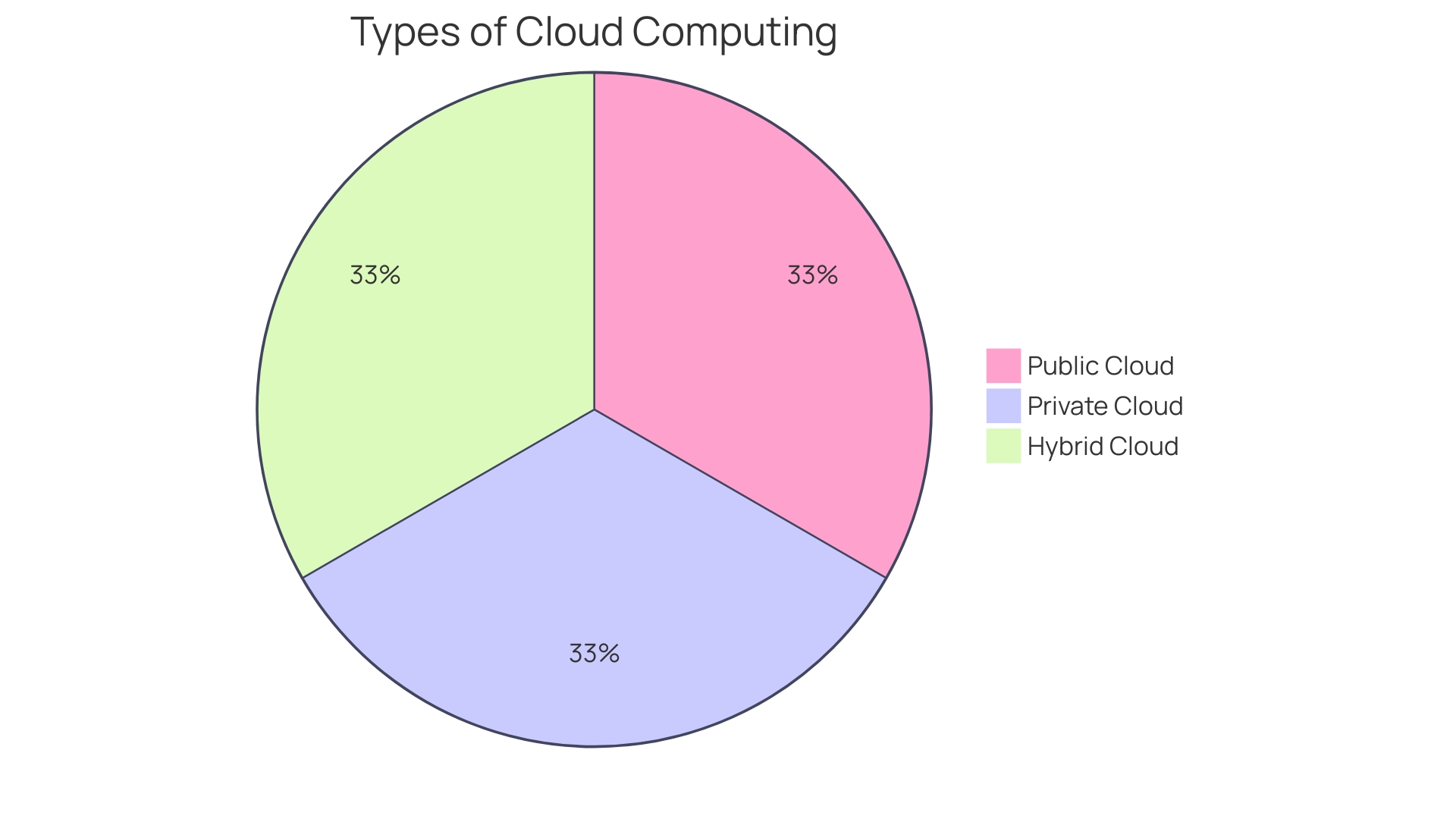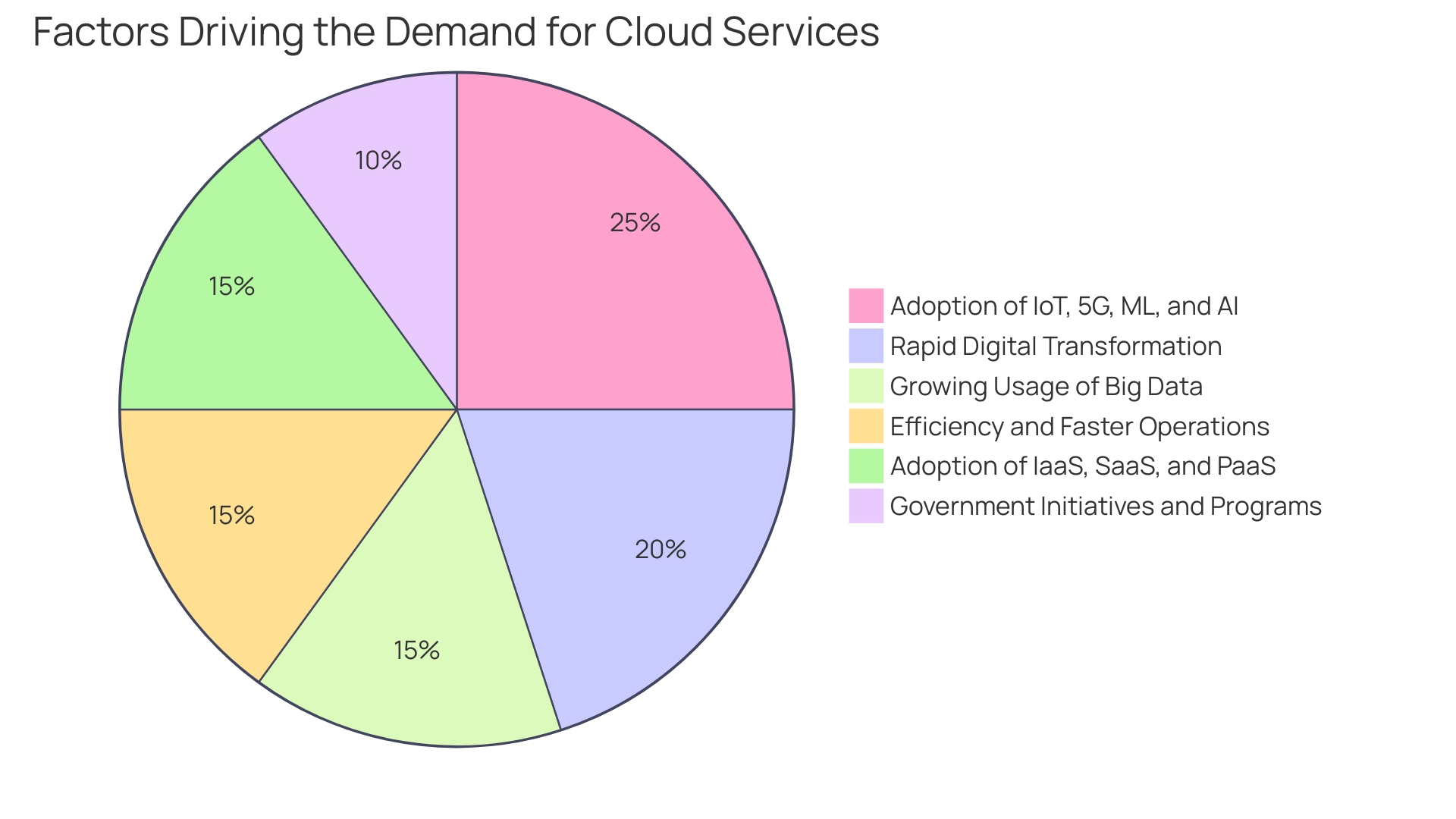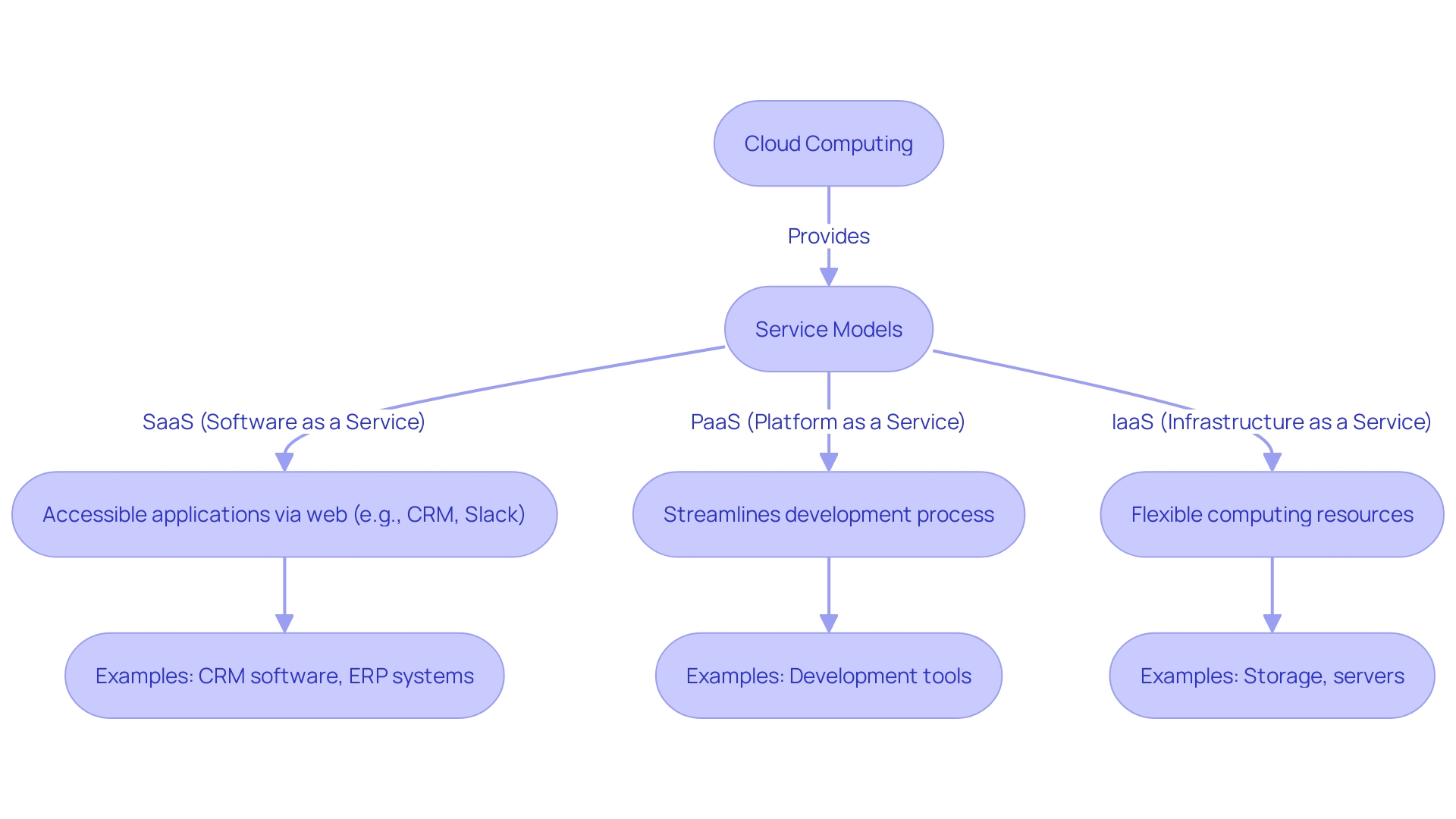Introduction
Cloud computing has revolutionized the way software is consumed and paid for, with Software as a Service (SaaS) leading the charge. This article explores the concept of SaaS, as well as its counterparts, Platform as a Service (PaaS) and Infrastructure as a Service (IaaS). These cloud-based models offer organizations the flexibility, scalability, and cost-effectiveness needed to thrive in today's digital economy.
By understanding the advantages and disadvantages of each model, businesses can make informed decisions about which cloud solution best aligns with their objectives. Whether it's accessing software applications through a web interface with SaaS, streamlining application development with PaaS, or renting virtual computing resources with IaaS, the cloud offers a world of possibilities for organizations seeking efficiency, agility, and innovation.
What is SaaS (Software as a Service)?
SaaS, an acronym for Software as a Service, represents a paradigm shift in how software is consumed and paid for. In this model, users access software over the internet, typically through a browser, with providers hosting and managing the necessary infrastructure, databases, and code. This alleviates the need for users to handle software maintenance and updates, offering them a subscription-based approach that aligns with their usage needs. Such flexibility not only simplifies scalability but also converts traditional capital expenditures into more predictable operating expenses.
The SaaS model's advantages are widely acknowledged in sectors that demand agility, such as IT and software development. Companies leverage cloud capabilities to manage fluid workloads and sustain continuous integration and deployment workflows. For instance, firms like Svitla Systems deliver business solutions that embody this cloud-centric approach to resource management, providing the elasticity required to accommodate varying project demands.
Moreover, the cloud has redefined the notion of computing resources, likening it to renting a computer at a cyber cafe—you pay for what you use, when you use it, without the overhead of ownership. This analogy underscores the transition from the hefty upfront costs of purchasing and maintaining physical servers to the streamlined, service-oriented cloud computing landscape.
Historically, the deployment of web services necessitated significant investment in servers, security, and infrastructure management. The advent of cloud computing has revolutionary simplified these processes, addressing concerns around performance, security, and reliability with solutions that extend beyond a physical location to an operational model deployable anywhere.
Industry analysts, including John Dinsdale from Synergy Research Group, have observed how investments in emergent technologies like generative AI bolster enterprise spending on cloud services, indicating sustained growth in this domain. With a staggering $200 billion projected to be spent on SaaS worldwide in 2023, the economic impact of this model is comparable to the GDPs of entire nations, highlighting its significance in the modern digital economy.
What is PaaS (Platform as a Service)?
Platform as a Service (PaaS) has revolutionized application development by providing a comprehensive, cloud-based environment that enables developers to create, deploy, and manage applications with enhanced efficiency and minimal concern for the underlying infrastructure. PaaS encompasses a suite of tools and services, including development tools, runtime environments, and databases, which streamline the application development process and allow developers to concentrate on their core competencies.
One illustrative example of PaaS in action is the collaboration between IFCO and Rackspace Technology, where IFCO leveraged Rackspace's expertise and customer-centric approach to transition to the cloud. This partnership enabled IFCO, which has a comparatively small IT department, to utilize Rackspace's experience to effectively deliver cloud solutions. The success of this venture is a testament to the robust capabilities of PaaS providers to support companies in navigating the intricacies of cloud adoption.
In the broader context, PaaS is gaining traction across various industries, particularly as the demand for cloud services surges. This demand is driven by the rapid digital transformation, the pervasive use of smart devices and the internet, and the integration of advanced technologies such as the Internet of Things (IoT), Machine Learning (ML), and Artificial Intelligence (AI). As reported by the World Economic Forum, the fourth industrial revolution has been a catalyst for the adoption of such technologies, necessitating the use of cloud computing to facilitate these innovations.
Indeed, the advantages of adopting a cloud computing architecture are manifold, offering businesses the agility to operate more efficiently and adapt swiftly to changing market environments. As organizations increasingly place their trust in cloud services to support innovative technologies, cloud models like PaaS are becoming indispensable. They offer a scalable and flexible platform that significantly reduces infrastructure costs, accelerates time-to-market, and promotes increased productivity, proving essential for Small and Medium Enterprises (SMEs) and large organizations alike.
Furthermore, the seamless nature of PaaS, where everything from development to continuous application maintenance is automated, allows developers to focus solely on their coding endeavors. This model supports the entire development lifecycle and is integral to creating customized and sophisticated applications that cater to diverse business needs. The shift towards PaaS is evident in the growing proportion of IT spending devoted to cloud infrastructure, highlighting the trend towards externalizing infrastructure, management, and security services.

What is IaaS (Infrastructure as a Service)?
Infrastructure as a Service (IaaS) is an essential cloud computing model that empowers organizations with virtualized computing resources over the internet. Imagine having a powerful computer required for running business applications, storing an immense amount of data, and managing hefty network traffic, all without the need to purchase or maintain physical equipment. IaaS steps in as a virtual solution, providing processing power, storage, and networking resources akin to a virtual toolbox, which is accessible on-demand.
This model is akin to renting a computer at a cybercafe; you use what you need, for the time you need it, without the hassles of ownership. IaaS is adaptable, allowing for resources to be scaled to meet fluctuating demands, ensuring that businesses only pay for the resources they actively use. The scalability and flexibility of IaaS offer a cost-effective approach to building and managing IT infrastructure.
Recent trends in the data center industry, such as HPE's acquisition of Juniper and the introduction of advanced semiconductor technologies, underscore the growing importance of scalable and flexible infrastructure solutions. With the rise of AI, IoT, Machine Learning, and real-time analytics, the demand for cloud services is witnessing substantial growth. The World Economic Forum has highlighted the necessity for organizations to adopt cloud computing to leverage these advanced technologies effectively.
Statistics show a surge in cloud adoption driven by rapid digital transformation, internet proliferation, and the utilization of big data. The cloud computing market is further propelled by the increasing adoption of IoT, 5G, and artificial intelligence. As businesses strive for efficiency and agility, cloud architecture becomes pivotal in rapidly adapting to market changes.
The current landscape, shaped by events such as the global pandemic, has illustrated the versatility of cloud computing. Companies have rapidly deployed virtual desktop infrastructure (VDI) on public clouds, ensuring device-agnostic access and maintaining business continuity in challenging times. This swift adaptation highlights the strategic advantage of IaaS in modern business operations.

Key Differences Between SaaS, PaaS, and IaaS
- Software as a Service (SaaS) offers a compelling model for accessing software applications through the internet, eliminating the need for on-site installations and ongoing maintenance. It's a model that has seen widespread adoption across numerous sectors, from software development to finance, and is revered for its ability to deliver increased return on investment (ROI) to both companies and users. - Platform as a Service (PaaS) provides developers with the necessary tools to create and deploy applications, liberating them from the complexities of infrastructure management. This enables developers to focus on building software that meets user needs without being encumbered by underlying system concerns. - Infrastructure as a Service (IaaS) extends the concept of virtualization by allowing businesses to rent essential IT resources over the internet. This model provides the computing power, data storage, and networking capabilities needed to operate applications and handle business processes, without the burden of acquiring and maintaining physical infrastructure. - SaaS is typically offered on a subscription basis, aligning with the needs of end-users who seek scalable solutions without the hassle of software upkeep. In contrast, PaaS and IaaS employ a pay-as-you-go pricing approach, which provides flexibility and scalability to developers and organizations, ensuring they only pay for the resources they use. - While pricing models for SaaS, PaaS, and IaaS can vary, it's important for organizations to remain vigilant about opaque pricing tactics that can lead to software inflation. With careful monitoring of SaaS spending and usage, companies can optimize costs and mitigate the impact of potential price hikes, which have been observed across major providers with increases up to 25%.
Advantages and Disadvantages of Each Model
-
SaaS (Software as a Service) offers an array of advantages for users seeking simplicity and efficiency. With SaaS, applications are accessible through a web interface, eliminating the need for local installation and ongoing maintenance, which contributes to its scalability and flexibility. However, it's crucial to recognize that SaaS solutions may come with their own set of limitations, such as restricted customization due to the service being managed by the provider, and potential security and privacy issues that need to be vigilantly managed.
-
Moving to PaaS (Platform as a Service), this model significantly accelerates application development and deployment, while also curtailing infrastructure-related expenses. Users benefit from the inherent scalability and flexibility of PaaS. Despite these advantages, potential drawbacks include the risk of platform lock-in, which can limit control over infrastructure, and a dependency on the platform provider's stability and performance.
-
Lastly, IaaS (Infrastructure as a Service) is celebrated for its flexibility and scalability, presenting a cost-effective approach to infrastructure management. Users gain control over their virtualized environments. However, IaaS may introduce complexity in infrastructure management and provoke variations in performance. Additionally, users must take on the responsibility of managing operating systems and applications, which can be a significant undertaking.

Use Cases for SaaS, PaaS, and IaaS
-
SaaS (Software as a Service) models have transformed the way businesses operate, providing a variety of applications that are easily accessible through the web. For instance, CRM software such as Salesforce has revolutionized customer relations, enabling teams to track and engage with clients seamlessly. ERP systems have made resource planning more efficient, and tools like Slack have improved team collaboration.
-
PaaS (Platform as a Service) is a favorite among developers for its ability to streamline the development process. It's exemplified by companies like Lex Machina, which manages vast amounts of legal data. Lex Machina shifted to a PaaS model for more efficient database management, illustrating PaaS's capability to support complex applications, including IoT solutions.
-
IaaS (Infrastructure as a Service) provides the foundation for flexible computing resources. Development and testing environments are crucial for businesses, and IaaS like AWS EC2 and Google Compute Engine offer scalable solutions. For data-intensive tasks, IaaS supports big data analytics, demonstrated by companies that leverage cloud infrastructure for real-time insights. Additionally, the importance of disaster recovery and backup solutions cannot be overstated, as they ensure data integrity and business continuity.

Choosing the Right Cloud Solution for Your Business
Selecting the appropriate cloud computing model—SaaS, PaaS, or IaaS—is a pivotal decision for organizations aiming to align their technological capabilities with strategic business objectives. The decision hinges on a multitude of factors, each of which plays a critical role in the overall efficacy and suitability of the chosen model.
-
Business objectives and goals: Clearly defined business goals are the compass guiding the choice of a cloud service. For instance, IFCO sought a small-scale IT department and opted for a partnership with Rackspace to leverage their extensive cloud experience, indicating a preference for a model that supports external expertise and managed services.
-
Required level of customization: The ability to tailor services to specific needs can be a determining factor. Chess.com, for instance, required a robust and flexible infrastructure to support its vast community, suggesting a preference for a service with high customizability.
-
Development and technical capabilities: The technical prowess of an organization's team can influence the level of control and management they desire over their cloud environment. Sirius Technologies' use of Strong Network's platform for Cloud Development Environments reflects a choice towards a model that supports developer efficiency and collaboration.
-
Data security and compliance requirements: Stringent security and compliance demands often necessitate a cloud service that offers sophisticated security tools and adherence to regulatory standards.
-
Scalability and flexibility needs: As noted by John Dinsdale from Synergy Research Group, the cloud market's growth is buoyed by technologies like generative AI that demand scalable and flexible cloud services to accommodate fluctuating computational requirements.
-
Budget and cost considerations: Cost is always a significant factor. The timing of purchases and renewals can affect pricing, as indicated by the seasonal trends in SaaS buying cycles. Organizations must weigh the financial implications of each model, including potential savings from pay-as-you-go pricing structures and reduced on-premises infrastructure costs.
In summary, the intersection of these considerations will guide organizations toward the cloud computing model that best serves their unique blend of requirements, ensuring a strategic fit that promotes success and innovation.
Conclusion
The cloud computing models of Software as a Service (SaaS), Platform as a Service (PaaS), and Infrastructure as a Service (IaaS) offer organizations the flexibility, scalability, and cost-effectiveness needed to thrive in today's digital economy.
SaaS allows users to access software applications through a web interface, eliminating the need for on-site installations and ongoing maintenance. It simplifies scalability, converts capital expenditures into operating expenses, and delivers increased return on investment. However, SaaS solutions may have limitations in customization and require vigilant management of security and privacy.
PaaS revolutionizes application development by providing a comprehensive, cloud-based environment that streamlines the development process and minimizes infrastructure concerns. It offers scalability, flexibility, and reduced infrastructure costs. Potential drawbacks include platform lock-in and dependency on the provider's stability and performance.
IaaS empowers organizations with virtualized computing resources, providing processing power, storage, and networking capabilities without the need for physical equipment. It offers flexibility, scalability, and cost-effectiveness. However, managing infrastructure and ensuring consistent performance can be complex.
Choosing the right cloud solution depends on factors such as business objectives, required customization, technical capabilities, data security and compliance requirements, scalability needs, and budget considerations. Each organization's unique blend of requirements will guide them towards the cloud computing model that best aligns with their objectives, promoting success and innovation in today's digital landscape.




